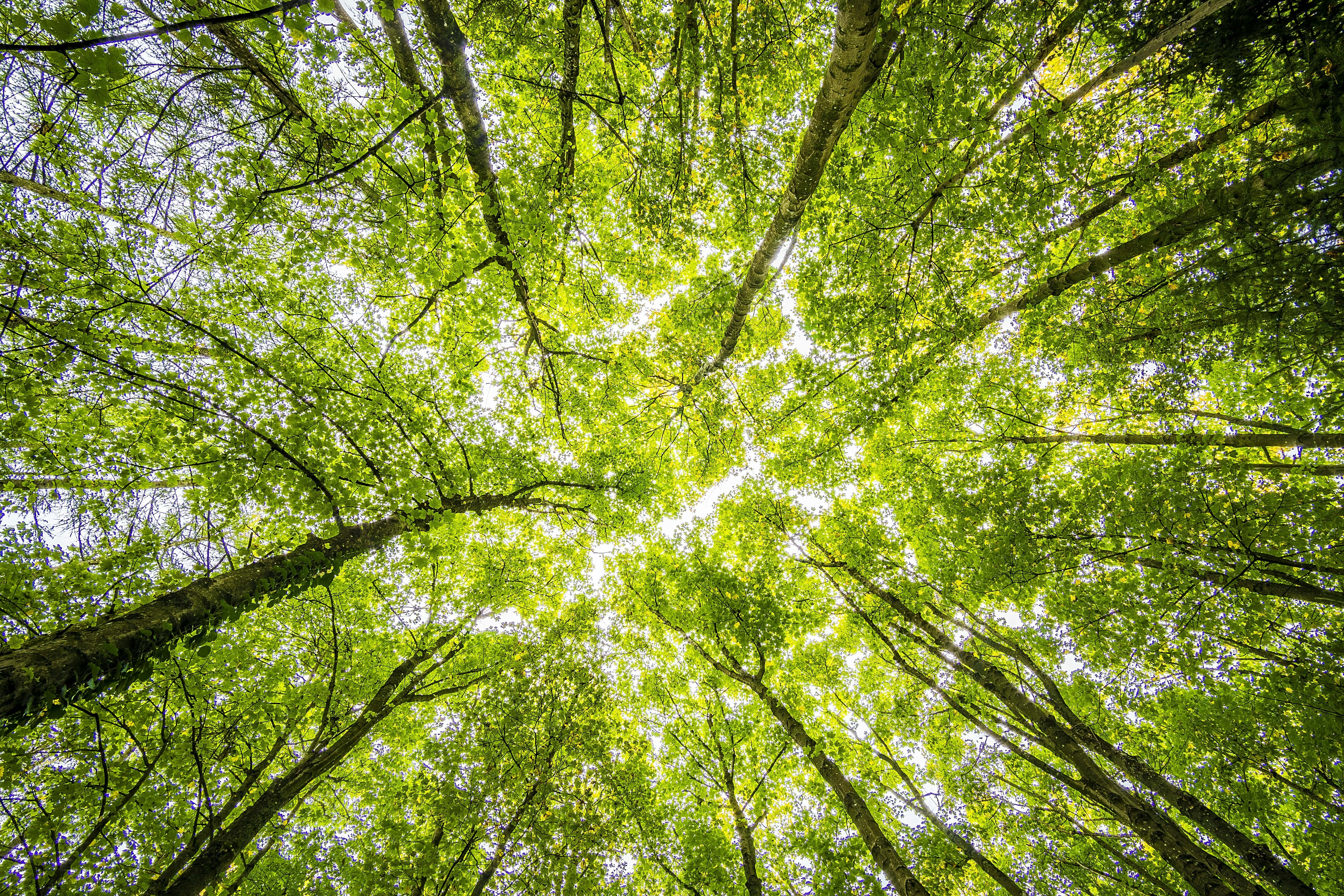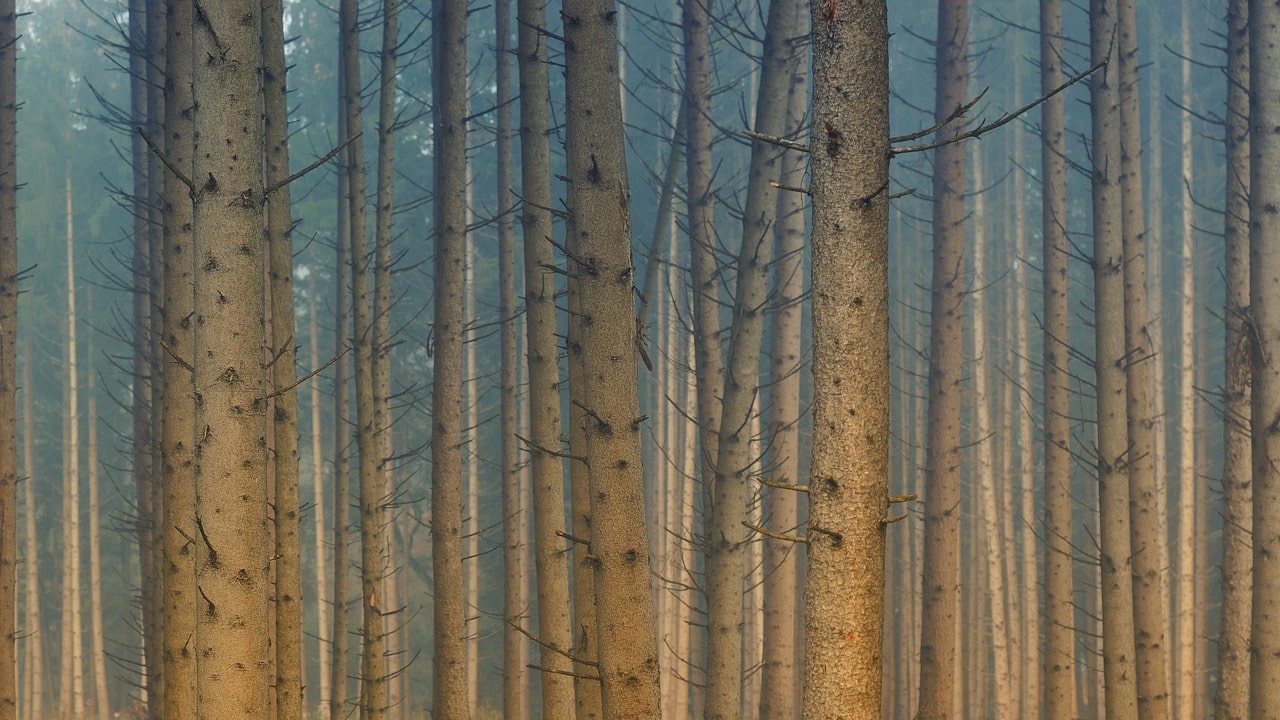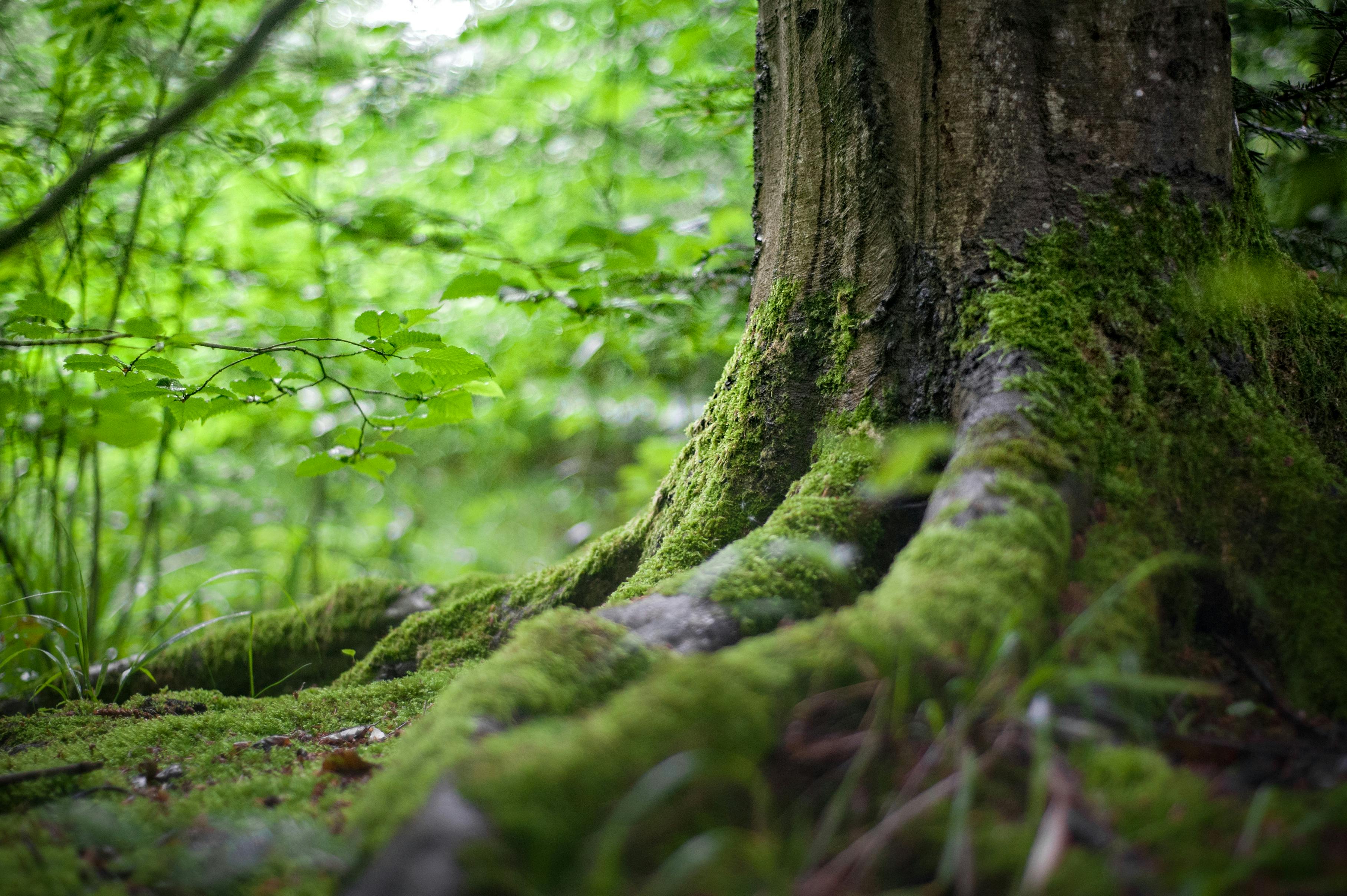Set within 2,000 acres of rolling countryside in County Durham, Hamsterley Forest offers visitors a beautiful natural escape just a short drive from Bishop Auckland and the surrounding areas. Managed by Forestry England, this diverse woodland provides ample opportunities for outdoor recreation and wildlife spotting across its extensive network of walking, cycling and horse riding trails.
With its mix of coniferous, broadleaf and open heathland habitats, Hamsterley Forest is home to a variety of flora and fauna. From birds of prey circling high above the forest canopy to tiny orchids sprouting from the woodland floor each spring, there is an abundance of natural wonders to uncover during every season. The forest’s centrepiece is the tranquil Bedburn Beck, a gently flowing stream bordered in places by steep valley woodlands that visitors can relax beside as it babbles over rocky waterfalls and calm pools.
In the following sections, we will take a closer look at everything Hamsterley Forest has to offer visitors, from its world-class mountain biking and running trails to details on the park's location, facilities, weather patterns and more. Whether you are a seasoned outdoor enthusiast or simply looking for a beautiful landscape to stretch your legs, Hamsterley Forest welcomes one and all to explore its natural riches.
Getting to Hamsterley Forest
Reaching Hamsterley Forest is straightforward thanks to its location just 3 miles south-east of Bishop Auckland off the A689 road in County Durham. Those travelling by car can follow the brown tourist signs from the A689 directing visitors to the main forest entrances, while a small number of local bus services also stop nearby.
Once within the park, miles of internal forest roads and winding trails await exploration on foot, bike or horseback. Well-marked signposts and information boards guide visitors around the park's most popular zones and attractions. For exploring further afield, a web of waymarked tracks and paths also connect Hamsterley Forest to the neighbouring countryside.
Hamsterley Forest Facilities
Despite its natural setting, visitors to Hamsterley Forest need not leave modern comforts behind. The park’s main facilities hub at Crawleyside incorporates a large pay and display car park, cycle hire outlet, cafe, toilets and an extensive programme of visitor information. The on-site Forest Lodge Cafe offers warming drinks and snacks to sustain exploration of the trails, while the classroom and exhibition space hosts engaging displays about the forest’s wildlife, culture and conservation.
Smaller parking areas and information points are also dotted across the forest for those looking to explore specific areas. Otherwise, kilometres of trails catering to all abilities allow visitors to immerse themselves as deeply in the natural world as they wish.
Hamsterley Forest Mountain Biking Trails
As one of England’s flagship mountain biking centres, Hamsterley Forest attracts riders from across Britain and beyond to test their skills on its acclaimed trails. The forest has firmly established itself as the North East’s mountain biking mecca thanks to over 33 km of purpose built single track tailor-made for adrenaline pumping rides through thick woods and over technical rock features.
The forest’s perfectly sculpted descents, berms, jumps and drop-offs are engineered to challenge even seasoned riders, while multiple dedicated skill zones allow beginners to hone their techniques safely away from faster trails. As a result, Hamsterley Forest delivers mountain biking thrills for every ability level amid stunning scenery.
The Red, Blue and Black Route Trail Networks
Hamsterley Forest’s mountain biking exploits are centred on three distinct networks of graded trails that cater to riders of all skill levels. Each network takes its name from the colours that signpost their routes.
The Red Route trails offer 11 km of gentle forest paths and singletrack for novice mountain bikers. Focusing on enjoyment over technicality, these trails guide riders through picturesque glades and alongside the babbling Bedburn Beck, building confidence without ever straying too far from the visitor hub at Crawleyside.
For intermediate riders, the 12 km long Blue Route delivers added technical challenges like rock gardens and elevated skinny bridges to test balance and bike control. Linked descents through densely wooded hillsides provide the perfect mix of scenic backdrops and engaging riding.
Finally, the Black Route’s 10 km of double black-graded descents and jump trails will stretch even elite mountain bikers to their limit. Only for highly experienced riders, these trails incorporate steep, root-tangled chutes through the forest and sizeable drop-offs requiring perfect technique and bravery in equal measure. Adrenaline guaranteed!
Upskilling at the Skills Zone
In addition to its network of graded trails, Hamsterley Forest also incorporates a dedicated Skills Zone for developing core mountain biking techniques. Located a short pedal from the Crawleyside parking area, this zone allows riders to session obstacles like rock gardens, bermed corners and jumps to improve bike handling confidence away from other trail users.
Instructors are also often on hand at the Skills Zone to provide pointers and tuition to new riders looking to maximise their enjoyment of the trails. From mastering basic skills like balancing over obstacles and controlling speed on descents to refining jump take-offs and landings, the Skills Zone has everything riders need to up their technical game.
Regular skill-building events and women’s coaching sessions further cement Hamsterley’s reputation as the region’s premier rider training ground. So whether you’re a seasoned mountain biker or just getting started, be sure to make use of Hamsterley’s extensive practice features when planning your next forest ride.
Walking and Running Routes in Hamsterley Forest
While best known as a cyclist’s playground, Hamsterley Forest also houses an outstanding network of walking and running trails spanning every ability level. Crisscrossing its mosaic of woodland, heathlands and snaking waterways via an intricate web of paths and forest roads, the park serves up scenic hikes ranging from short accessible trails to 12 mile-long route challenges.
With much of the park designated as open access land, visitors enjoy nearly unlimited options for crafting custom walking and running routes through this corner of County Durham’s unspoiled wilderness. Well-marked main paths provide helpful navigation between the forest’s most popular zones, while more adventurous explorers can improvise cross-country hike variations to uncover new vistas over the forests and valleys with every visit.
Waymarked Trails
For those seeking structured routes to appreciate Hamsterley Forest’s landscapes, a series of official waymarked trails are also mapped out across the park. Ranging from 1 to 7 miles long, these nine distinct trails tour visitors past key landmarks like striking Bedburn Wood and across the open Redford and Black Banks heathlands.
Shorter family-friendly options like the 1.2 mile Moor House trail offer leisurely rambles among purple heather and Scots Pine to the ruins of a 19th century shooting lodge. Meanwhile, the 6 mile Western Valley trail traverses trickling streams and dense broadleaf woodlands abundant with spring bluebell displays on its journey toward neighbouring Weardale.
Each walk showcases different facets of Hamsterley Forest's natural beauty. And thanks to their waymarkers and interpretive signage, even first-time visitors can navigate between sites of interest with confidence.
Hamsterley Forest Parkrun
In addition to its waymarked routes, regular parkrun events at Hamsterley Forest also prove increasingly popular for exercise enthusiasts. Taking place at 9am every Saturday, the free 5 km timed runs tour runners along winding singletrack and gentle forest road climbs to the banks of the Bedburn Beck.
Hundreds turn out each week to challenge themselves on the route or simply enjoy a social jog amid the forests’ tranquil surroundings. So whether you are looking to set a new personal best time or just stretch your legs at a relaxed pace, the parkrun provides the perfect motivation and community for making outdoor running in Hamsterley Forest a weekly habit.
Hamsterley Forest Weather and Seasonality
Situated in England’s green northeast, Hamsterley Forest sees generally mild weather patterns across all four seasons. However, given its exposed position amidst the Durham hills and moorlands, visitors should still come prepared for changeable conditions when planning activities across the trails.
By understanding seasonal norms and checking forecasts in advance, you can make the most of everything these multi-faceted woodlands have to offer no matter the time of year.
Hamsterley Forest Weather by Season
Spring
The arrival of spring transforms Hamsterley Forest, adding vivid splashes of colour that contrast beautifully with remnants of white winter frosts lingering across shaded glens. Visitors in March through May enjoy warming average temperatures around 7°C, heralding the forest’s flourishing wildlife emergence.
While spring showers do occur as the season progresses, rainfall totals remain relatively modest. So donning waterproofs, continuing to explore the leafy trails is easily achievable during transient rain bursts before winds dry the woodlands again. Just beware trail muddiness after heavy downpours!
Summer
Heading into summer, Hamsterley Forest enters its busiest tourist season. And with good reason - average temperatures from June to August hover pleasantly around 15°C making for ideal walking conditions amid the lush green canopy. Sunshine hours also increase during early summer, though cloudier days still prevail across the changeable North East climate.
Occasional summer storms can however put a dampener on outdoor plans. checking weather forecasts and packing lightweight water/windproof layers provides useful insurance for dodging any prolonged heavy rain when miles out on the trails.
Autumn
Vibrant autumnal colours set Hamsterley Forest ablaze through September and October as leaves shift from lush greens into warming yellows, reds and coppery browns. Brisk winds sweep across County Durham’s hilltops too, dropping average temperatures back to 10°C, so be sure to dress accordingly as the allure of those autumn scenes entices deep exploration into the forests.
By late November most deciduous trees stand bare, marking the transition into Hamsterley’s peaceful early winter phase. But before its woodlands sleep, autumn gifts magical golden hours during sunrise/sunset lighting up spectacular vistas to reward those braving the chillier trail conditions.
Winter
Entering December, the Hamsterley Forest landscape takes on a true sense of wilderness befitting frigid winter months. Icy trails, frosted heathers and snow dusted pines transform rooms into a winter wonderland with average temperatures hovering just above freezing around 3°C.
Biting winds regularly sweep over upper trail sections too during Durham’s winter months. So hearty waterproof clothing, grippy winter footwear and emergency supplies prove essential when venturing far from parking areas on snowy days.
Of course winters here vary hugely in their extremity. During milder spells, winter walking under sunny skies remains wholly enjoyable across maintained lower level trails. But Hamsterley’s higher ground sees full snow coverage most years, rewarding adventurous souls with breathtaking winter vistas.
Hamsterley Forest Flora and Fauna
Whether tredding its trails in spring, summer, autumn or winter, the diversity of life inhabiting Hamsterley Forest's habitats amazes visitors year round. These woodland ecosystems nurture vibrant ecological communities spanning all classifications of the natural world - from tiny fungi flourishing on fallen trees to majestic birds of prey patrolling the forest skies.
By understanding key details of this abundance, you can enrich every step through the forest environment via deeper connections with its native and migratory resident species. So let's explore some standout examples of the flora and fauna visitors might encounter when exploring Hamsterley’s living landscape across the seasons.
Trees and Plants
Over 75% of Hamsterley Forest is blanketed in a lush mosaic of broadleaf and conifer woodlands harbouring varied trees, shrubs and ground plants. Among the broadleaf species dotting grassy forest clearings, oak, birch and hazel trees prevail, stretching their leafy boughs upward to form the woods' lofty green ceiling.
Down below, wandering trails are lined with sweet chestnut trees and colourful rhododendron shrubs bearing huge pink blooms through summer months. Edging forest streams and damp hollows, natural stands of towering alder trees thrive alongside carpets of fern, foxglove and bluebell blanketing the woodland floor come springtime.
Adding structural diversity, non-native pine, larch and spruce trees were also introduced across extensive forest areas to meet timber production needs. Their neat rows and towering straight trunks lend certain pathways a more orderly ambience between patches of ancient broadleaf wilderness.
Animal Residents
While trees may shape its landscape, Hamsterley Forest also houses abundant fauna. From tiny goldcrests flitting between conifers to badgers foraging its fringes under moonlight, the diversity of animal life matches that of its plants.
Among the forest’s most cherished and observable residents are its summer migrant bird communities. Species like willow warblers, tree pipits and curlews arrive annually to nest in favoured woodland pockets and heathland zones from April through September as part of their migratory cycles.
For birdwatchers, this makes spring and early summer prime seasons to witness courtship displays like the wood warbler’s cheerful song bouncing between oaks or glimpse elusive black grouse strutting the forest’s heather moorlands. Autumn conversely delivers sightings of birds of prey such as common buzzards and kestrels riding warm air currents on their southern migrations.
Of course Hamsterley’s wildlife also remains active through winter months too. Hardy bird varieties like coal tits, siskins and crossbills frequent its cone-laden conifers year-round, while mammal tracks left overnight in snow reveal glimpses of secretive otters, badgers, deer and more also toughing out the cold during their essential woodland wanderings.
By staying alert through every season to subtle sights and sounds indicating nearby animal activity, Hamsterley Forest always rewards visitors’ curiosity about its remarkable ecology.
Hamsterley Forest Heritage and Conservation
Beyond its contemporary popularity as an outdoor recreation hotspot, records of continuous human habitation within Hamsterley Forest stretch back over 600 years. Through generations the forest environment provided vital resources sustaining local mining and farming communities while also developing a rich cultural heritage on practices like woodland management.
Understanding this long interwoven relationship between people and place not only connects us more deeply with Hamsterley’s past. It also reveals why active conservation initiatives remain crucial for safeguarding the vulnerable habitats thriving across areas visitors explore recreationally today.
A History of Habitation
With archaeological evidence indicating early clearance activity from the late Mesolithic period circa 6000 BCE, humans have shaped the Hamsterley Forest landscape over countless millennia. Small late Bronze and Iron Age settlements once dotted areas now forested, while reminders of the Medieval era linger via 12th century earthwork fortifications flanking the visitor centre.
However from the 1600s right through to the early 20th century, Hamsterley Forest's identity became firmly entwined with coal mining and the emergence of industrial scale timber plantations. Pit coal propelled the region’s growth, necessitating tree felling that erased much earlier woodlands. State afforestation efforts followed to stabilise erosion across excavated zones.
Communities like nearby Hamsterley Colliery village were sustained by these combinations of forestry and mining well into the late 1900s, leaving lasting infrastructure remnants straddling the modern forest park visitors tread today. Understanding this cultural heritage deepens appreciation for all the forest provides.
Conservation Initiatives
With such an extensive legacy of resource excavation and land use changes, careful habitat conservation now ensures stability is restored across areas scarred through past industrial activities.
Programmes re-establishing rich heathland, bog and woodland diversity help revive ecosystems that support rare species like the endangered red squirrel and black grouse populations now recovering after near regional extinction last century.
Visitor centre wildlife exhibits detailing these efforts to rectify past habitat loss provide context around the modern trails we enjoy. They also explain why sticking to waymarked routes protects the most fragile zones still regeneration decades after intensive mining ceased permanently.
Ultimately the scale of environmental changes wrought here over recent centuries leaves much still to restore through ongoing sustainable conservation initiatives. But the expanding native woodlands, heaths and diverse wildlife seen today offer hope that sensitive management can steadily undo past damage - leaving vibrant natural spaces like Hamsterley Forest to thrive for generations yet to come.
Best Times to Visit Hamsterley Forest
Given its range of world-class trails catering to countless outdoor pursuits, Hamsterley Forest gifts visitors memorable days out amid nature virtually any time of year. However by planning trips around specific events and seasonal windows tailored to your favoured activities, you are sure to maximise enjoyment during your woodland adventures.
Key Annual Events
In addition to its year-round trail access, Hamsterley Forest hosts fun annual events appealing to various outdoor passions. Pencilling these fixture dates into your diary guarantees added vibrancy across your visit:
Forest Live Music Festival
Each June, a lively concert weekend sees huge acts perform open-air gigs against the spectacular forest backdrop. Past stars like Paul Weller, Tom Jones and Madness draw sizable crowds to sway and sing amid the trees – evenings not to miss for music lovers!
The Hamsterley Helter Bike Festival
Taking over the entire forest during late August Bank Holiday weekend, this rowdy celebration of mountain biking brings live bands, competitions and special guest riders hurtling down the trails. A must for any Hamsterley Forest mountain biking fan’s calendar!
Hamsterley Forest Festive 10k Run
Brave winter chills each December by joining this mass charity run through magical frosted forest scenery in festive fancy dress! Raising funds for great causes while working off Christmas indulgences, the event delivers feel good vibes to end the year.
Seasonal Activity Recommendations
Beyond its lively annual calendar, Hamsterley Forest also shines during certain seasons for specific outdoor pursuits. Use this guide to match prospective travel months with your activity passions:
Spring: Mountain Biking and Birdwatching
The spring mountain biking season beckons eager riders to hit resuscitated trails with unrivalled grip for speedy spring descents. It's also a top season for birdwatching amid boosted breeding activity across the woods and heathlands.
Summer: Family Adventures
The school holiday months promise great family memories amid the forest's wildlife exhibits and adventure play areas. Long sunny days also create perfect picnicking conditions to punctuate leisurely woodland strolls.
Autumn: Forest Foraging
Vibrant colours setting Hamsterley Forest ablaze in autumn create atmospheric hikes ideal for foraging fruits and fungi. Just be cautious collecting only safe mushrooms and berries avoiding poisonous lookalikes.
Winter: Festive Walks
Icy trails and snow dusted pines transform the forest into a magical winter wonderland in December. Just wrap up warm and watch your footing if hitting the trails between Christmas and New Year to admire the fairytale settings!
Practical Tips For Visiting Hamsterley Forest
Choosing Trailheads and Planning Routes
Stepping into the lush forest wilderness, even detailed trail maps can seem bewildering with endless intersecting paths and zones beckoning exploration. Choosing trailhead areas aligned closely to your planned activities helps orientate initial bearings.
Mountain bikers congregate around Crawleyside’s facilities to access the graded MTB trails, while walkers looking to trek sections of the Weardale Way might begin from Hamsterley village fringing the park’s western regions. Knowing approximate zones matching your goals means you can then better pinpoint desired routes and intersections.
Apps like Viewranger load printable GPS forest maps onto mobile devices to track breadcrumb style, great for set walking routes or improvising aimless wanderings. While paper maps from information boards offer analogue backup for when devices die miles deep amid the trees and valleys.
What to Pack
Hamsterley Forest’s mixed habitat terrain and four season climate variation calls for versatility in what you carry during its trails. Quality waterproofs, hats and gloves prove essential year round during the region’s transient storms and temperature drops. Trail running shoes with grippy sole treads help navigating muddy patches and slippery rocks too.
Staying nourished matters also when burning energy exploring 20 miles of criss-crossing paths. High energy snacks supplements sandwiches and hot flask drinks carried to enjoy scenically beside the babbling Bedburn Beck. Emergency whistles, headtorches and powerbanks likewise provide prudent insurance against unexpected diversions or injuries occurring far from phone signals when alone in the forests extensive acreage.
Regardless of your planned activity, packing for contingencies brings confidence to immerse wildly and safely in Hamsterley’s natural landscapes.
Respecting Other Forest Users
With immense visitor numbers across its peaks, humility and respect between trail users helps sustain Hamsterley’s welcoming atmosphere for all to enjoy. Simple courtesies like cyclists yielding to horse riders on narrow tracks or dog walkers using leads during busy periods preserve the forests harmony and accessibility amid diverse hobbies.
Everyone ultimately shares a common love for these landscapes. So by supporting each other through trail etiquette and friendly greetings, Hamsterley Forest gifts rewarding days out to nature lovers across the generations wanting to protect its magic for tomorrow.
Discovering More
This in-depth guide should hopefully help newcomers and seasoned visitors better appreciate everything spectacular Hamsterley Forest offers outdoor fanatics and nature enthusiasts throughout the year. Whether tackling adrenaline filled mountain bike descents or meandering the tree-lined trails looking skyward for rare birdlife, days spent immersed within this woodland wilderness promise wonderful memories.
Related Articles

Let us know you agree to cookies
We use marketing, analytical and functional cookies as well as similar technologies to give you the best experience. Third parties, including social media platforms, often place tracking cookies on our site to show you personalised adverts outside of our website.
We store your cookie preferences for two years and you can edit your preferences via ‘manage cookies’ or through the cookie policy at the bottom of every page. For more information, please see our cookie policy.








